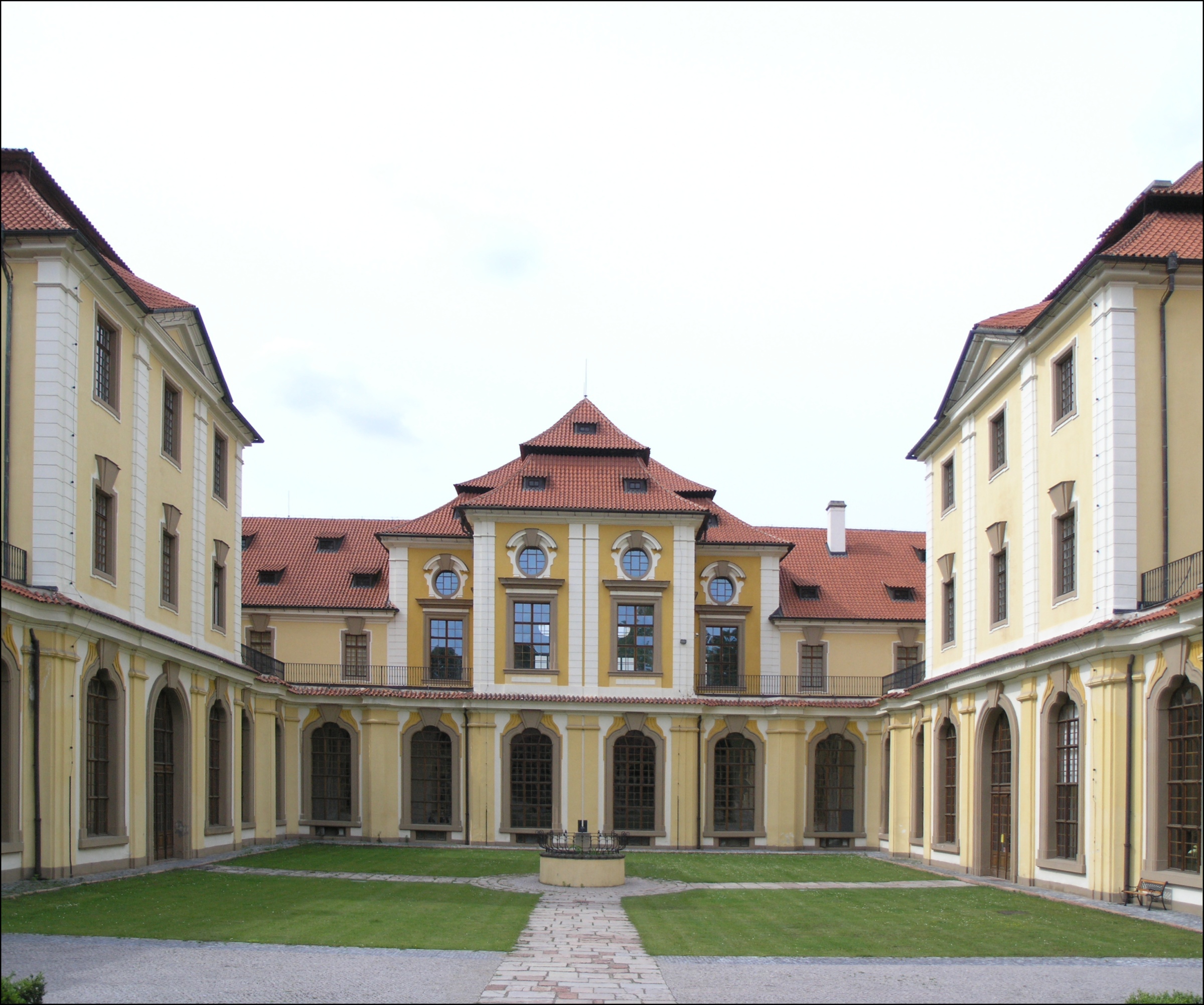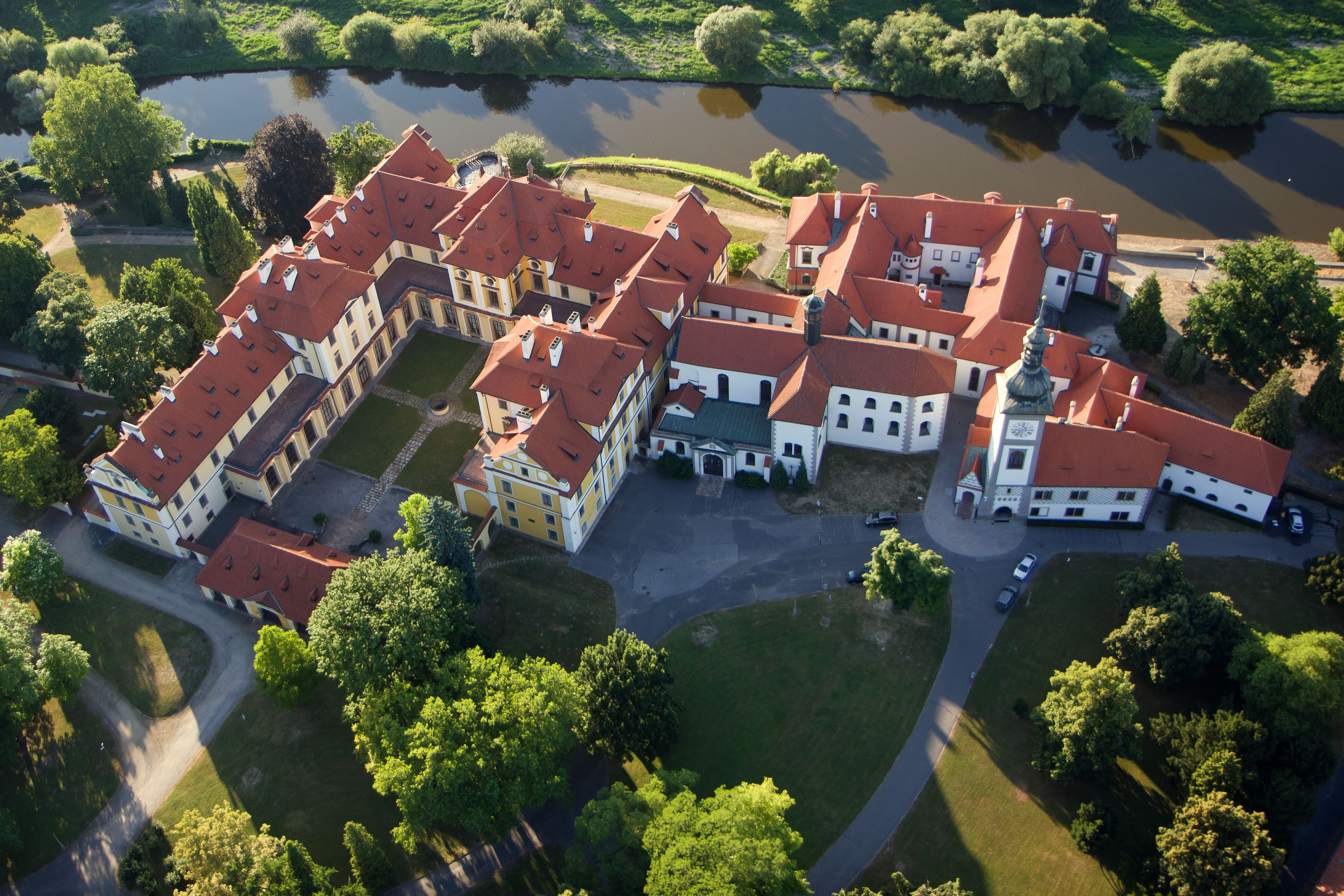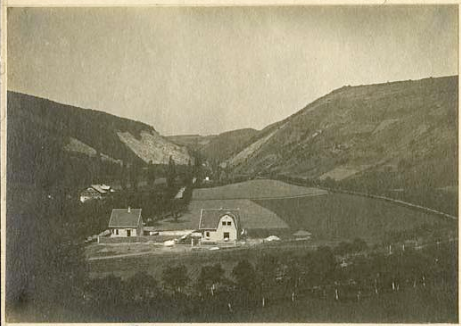|
Zbraslav
Zbraslav (; german: Königsaal; Latin ''Aula Regia'') is a Prague districts, municipal district and cadastral area of Prague. The southernmost district of Prague, it lies on the Vltava River in the national administrative district of Prague 16. The former independent municipality of Zbraslav is now one of two cadastral areas in the Prague-Zbraslav Municipal District. The other is Lahovice. History Zbraslav was founded in 1118. In the 13th century, the king Wenceslaus II of Bohemia founded here a very influential Cistercians, Cistercian abbey which was called ''Aula regia'' in Latin. The medieval monastery became the burial place of Bohemian kings. The Madonna of Zbraslav (a masterpiece of Bohemian Gothic fine art) was painted for this monastery in the 1340s. In 1935, Valentin Bulgakov, V. Bulgakov founded an important Russian museum here with collections dedicated to Russian emigrants, but the museum was closed and confiscated by the Communists before 1948. In 1924, Žabovřesk ... [...More Info...] [...Related Items...] OR: [Wikipedia] [Google] [Baidu] |
Madonna Of Zbraslav
The Zbraslav Madonna (c. 1360) comes from the parish church of St James the Greater in Zbraslav.Royt 2003, p.62 It is on long-term loan at the permanent exhibition of the National Gallery in Prague. History of the painting The Cistercian abbey in Zbraslav near Prague was founded by king Wenceslaus II in imitation of the royal necropolis of Saint Denis near Paris. Elisabeth of Bohemia, mother of Emperor Charles IV was also buried in the monastery. Although the origin of this picture is not known and its existence is not recorded in any written documents, comparative analyses have shown that it dates from the period between 1350 and 1360. The early character of the engraved drawing and the pentiments that have been revealed prove that it isn’t a later copy. The story that the picture was dedicated to the monastery by its founder Wenceslaus II (1278–1305) dates from the late 18th century. In the past, there was an excerpt of poetry on the rear side of panel, glorifying th ... [...More Info...] [...Related Items...] OR: [Wikipedia] [Google] [Baidu] |
Zbraslav Monastery
The Cistercian Abbey of Zbraslav ( la, Aula Regia, cs, Zbraslavský klášter) located in Zbraslav near Prague (today part of Prague) was one of the most significant monastery, monasteries of the Cistercians, Cistercian Order in the Kingdom of Bohemia (present-day Czech Republic). Founded by King Wenceslaus II of Bohemia in 1292 it became the royal necropolis of the last members of the Přemyslid dynasty. The abbey was abolished by the Bohemian King and Holy Roman Emperor Joseph II, Holy Roman Emperor, Joseph II in 1789. The best-known abbot of this monastery was Peter of Zittau († 1339) who wrote the ''Zbraslav Chronicle'' ( la, Chronicon Aulae Regiae), the most important historical source for the history of Bohemia in the first half of the 14th century. The Zbraslav abbey is also known for the Madonna of Zbraslav, an outstanding Gothic painting from the 1340s. See also *Czech Gothic architecture *Czech Baroque architecture References Cistercian monasteries in the Cze ... [...More Info...] [...Related Items...] OR: [Wikipedia] [Google] [Baidu] |
Prague Districts
Prague has a local-government structure of two or three tiers, depending on the area of town. At the top is the Magistrate of the Capital City of Prague ( cs, Magistrát hlavního města Prahy), which is responsible for public transport; waste collection; municipal police; firefighting; ambulance services; cultural activities; care of historical sites; the Prague Zoo; and other activities of citywide significance. Prague is divided into 10 municipal districts (1-10), 22 administrative districts (1-22), 57 municipal parts, or 112 cadastral areas. Since 1990, the city has been divided into 56 (since 1992, 57) self-governing municipal parts ( cs, městské části). The parts are responsible for parks and environmental protection; ordering equipment for schools and volunteer firefighters; some cultural and sports activities; activities for seniors; some social and health programs; cemeteries; and collection of fees for dog tags and the like. Another important activity of the municipal ... [...More Info...] [...Related Items...] OR: [Wikipedia] [Google] [Baidu] |
Vladislav Vančura
Vladislav Vančura () (23 June 1891 in Háj ve Slezsku – 1 June 1942 in Prague) was an important Czechs, Czech writer active in the 20th century, who was murdered by the Nazis. He was also active as a film director, playwright and screenwriter. Early years Vančura was born on 23 June 1891 in Háj ve Slezsku in Austrian Silesia (today the Czech Republic). He was a descendant of an old noble Vančura of Řehnice family. His father Václav Vojtěch Vančura, born 1856 in Čáslav, was a Protestantism, Protestant and worked as an administrator of sugar refinery. His mother, Marie Svobodová was Catholic, born 1863 in Kluky near Čáslav. In 1896, the family moved to Davle on the riverside of Vltava, about 12 miles south of Prague, where they lived in a large country house. His broadminded father became a director of a brick factory. In Davle, young Vladislav was educated by a tutor between 1898-1904. In 1905, he and his older sisters moved to Prague to study there; Vladislav enter ... [...More Info...] [...Related Items...] OR: [Wikipedia] [Google] [Baidu] |
Jaromír Vejvoda
Jaromír Vejvoda (28 March 1902 – 13 November 1988) was a Czech composer and the author of the "Beer Barrel Polka". Life and work Vejvoda was born and died in Zbraslav. He learned to play the fiddle and flugelhorn in a band led by his father. Later he played these instruments in a military band. He started to compose in the 1920s while he worked as a bartender in a pub owned by his father-in-law. In 1929 he wrote the ''Modřanská polka'' named after Modřany, a suburb of Prague where it was played the first time. This catchy tune became a hit and allowed Vejvoda to pursue music as a full-time professional. It was published in 1934 with lyrics ''Škoda lásky, kterou jsem tobě dala...'' Publishing house Shapiro Bernstein acquired the rights shortly before World War II and the polka, now the "Beer Barrel Polka" with the English lyrics "Roll out the barrel...", became the most popular song of the Allies in the West, although the original Czech lyrics have a very different meani ... [...More Info...] [...Related Items...] OR: [Wikipedia] [Google] [Baidu] |
Petr Žitavský
Peter of Zittau ( cz, Petr Žitavský; –1339) was a Bohemian churchman and historian. Born in Zittau, he entered the Cistercian monastery of Aula Regia (Zbraslav), founded by Wenceslaus II in 1292, and became the monastery's official historian. He is the primary author of the '' Chronicon Aulae Regiae''. Esteemed by his colleagues, in 1316 Peter was elected the second abbot of Aula Regia. In this capacity he took part in the election of King John and staunchly opposed Henry of Carinthia. He later grew disenchanted with John, but wrote a lengthy lament for the passing of his wife, Elizabeth Elizabeth or Elisabeth may refer to: People * Elizabeth (given name), a female given name (including people with that name) * Elizabeth (biblical figure), mother of John the Baptist Ships * HMS ''Elizabeth'', several ships * ''Elisabeth'' (sch ..., the "true heiress of Bohemia" (''vera heres Boemiae''), in 1330. Notes Sources * * * * * {{Authority control 1339 deaths Cistercian ab ... [...More Info...] [...Related Items...] OR: [Wikipedia] [Google] [Baidu] |
Prague 16
Prague 16 is a municipal district (''městská část'') of Prague. It has about 8,500 inhabitants. It is located in the south-western part of the city. It is formed by one cadastre, Radotín. The administrative district (''správní obvod'') of the same name consists of municipal districts Prague 16, Lipence, Lochkov, Velká Chuchle and Zbraslav Zbraslav (; german: Königsaal; Latin ''Aula Regia'') is a Prague districts, municipal district and cadastral area of Prague. The southernmost district of Prague, it lies on the Vltava River in the national administrative district of Prague 16. T .... See also * SC Radotín * Olympia Radotín References External links * Districts of Prague {{Prague-geo-stub ... [...More Info...] [...Related Items...] OR: [Wikipedia] [Google] [Baidu] |
National Gallery In Prague
The National Gallery Prague ( cz, Národní galerie Praha, NGP), formerly the National Gallery in Prague (), is a state-owned art gallery in Prague, which manages the largest collection of art in the Czech Republic and presents masterpieces of Czech and international fine art in permanent and temporary exhibitions. The collections of the gallery are not housed in a single building, but are presented in a number of historic structures within the city of Prague, as well as other places. The largest of the gallery sites is the Trade Fair Palace (''Veletržní Palác''), which houses the National Gallery's collection of modern art. Other important exhibition spaces are located in the Convent of St Agnes of Bohemia, the Kinský Palace, the Salm Palace, the Schwarzenberg Palace, the Sternberg Palace, and the Wallenstein Riding School. Founded in 1796, it is one of the world's oldest public art galleries and one of the largest museums in Central Europe. History The history of the Nati ... [...More Info...] [...Related Items...] OR: [Wikipedia] [Google] [Baidu] |
Cistercians
The Cistercians, () officially the Order of Cistercians ( la, (Sacer) Ordo Cisterciensis, abbreviated as OCist or SOCist), are a Catholic religious order of monks and nuns that branched off from the Benedictines and follow the Rule of Saint Benedict, as well as the contributions of the highly-influential Saint Bernard of Clairvaux, known as the Latin Rule. They are also known as Bernardines, after Saint Bernard himself, or as White Monks, in reference to the colour of the "cuculla" or cowl (choir robe) worn by the Cistercians over their habits, as opposed to the black cowl worn by Benedictines. The term ''Cistercian'' derives from ''Cistercium,'' the Latin name for the locale of Cîteaux, near Dijon in eastern France. It was here that a group of Benedictine monks from the monastery of Molesme founded Cîteaux Abbey in 1098, with the goal of following more closely the Rule of Saint Benedict. The best known of them were Robert of Molesme, Alberic of Cîteaux and the English ... [...More Info...] [...Related Items...] OR: [Wikipedia] [Google] [Baidu] |
Žabovřesky (Zbraslav)
Žabovřesky may refer to places in the Czech Republic The Czech Republic, or simply Czechia, is a landlocked country in Central Europe. Historically known as Bohemia, it is bordered by Austria to the south, Germany to the west, Poland to the northeast, and Slovakia to the southeast. The ...: * Žabovřesky (České Budějovice District), village and municipality in the South Bohemian Region * Žabovřesky nad Ohří, village and municipality in the Ústí nad Labem Region {{geodis ... [...More Info...] [...Related Items...] OR: [Wikipedia] [Google] [Baidu] |
Japanese Art
Japanese art covers a wide range of art styles and media, including ancient pottery, sculpture, ink painting and calligraphy on silk and paper, ''ukiyo-e'' paintings and woodblock prints, ceramics, origami, and more recently manga and anime. It has a long history, ranging from the beginnings of human habitation in Japan, sometime in the 10th millennium BC, to the present-day country. Japan has been subject to sudden invasions of new ideas followed by long periods of minimal contact with the outside world. Over time the Japanese developed the ability to absorb, imitate, and finally assimilate those elements of foreign culture that complemented their aesthetic preferences. The earliest complex art in Japan was produced in the 7th and 8th centuries in connection with Buddhism. In the 9th century, as the Japanese began to turn away from China and develop indigenous forms of expression, the secular arts became increasingly important; until the late 15th century, both religious and sec ... [...More Info...] [...Related Items...] OR: [Wikipedia] [Google] [Baidu] |
Chinese Art
Chinese art is visual art that originated in or is practiced in China, Greater China or by Chinese artists. Art created by Chinese residing outside of China can also be considered a part of Chinese art when it is based in or draws on Chinese culture, heritage, and history. Early " Stone Age art" dates back to 10,000 BC, mostly consisting of simple pottery and sculptures. After that period, Chinese art, like Chinese history, was typically classified by the succession of ruling dynasties of Chinese emperors, most of which lasted several hundred years. The Palace Museum in Beijing and the National Palace Museum in Taipei contains extensive collections of Chinese art. Chinese art is marked by an unusual degree of continuity within, and consciousness of, tradition, lacking an equivalent to the Western collapse and gradual recovery of Western classical styles of art. Decorative arts are extremely important in Chinese art, and much of the finest work was produced in large works ... [...More Info...] [...Related Items...] OR: [Wikipedia] [Google] [Baidu] |







